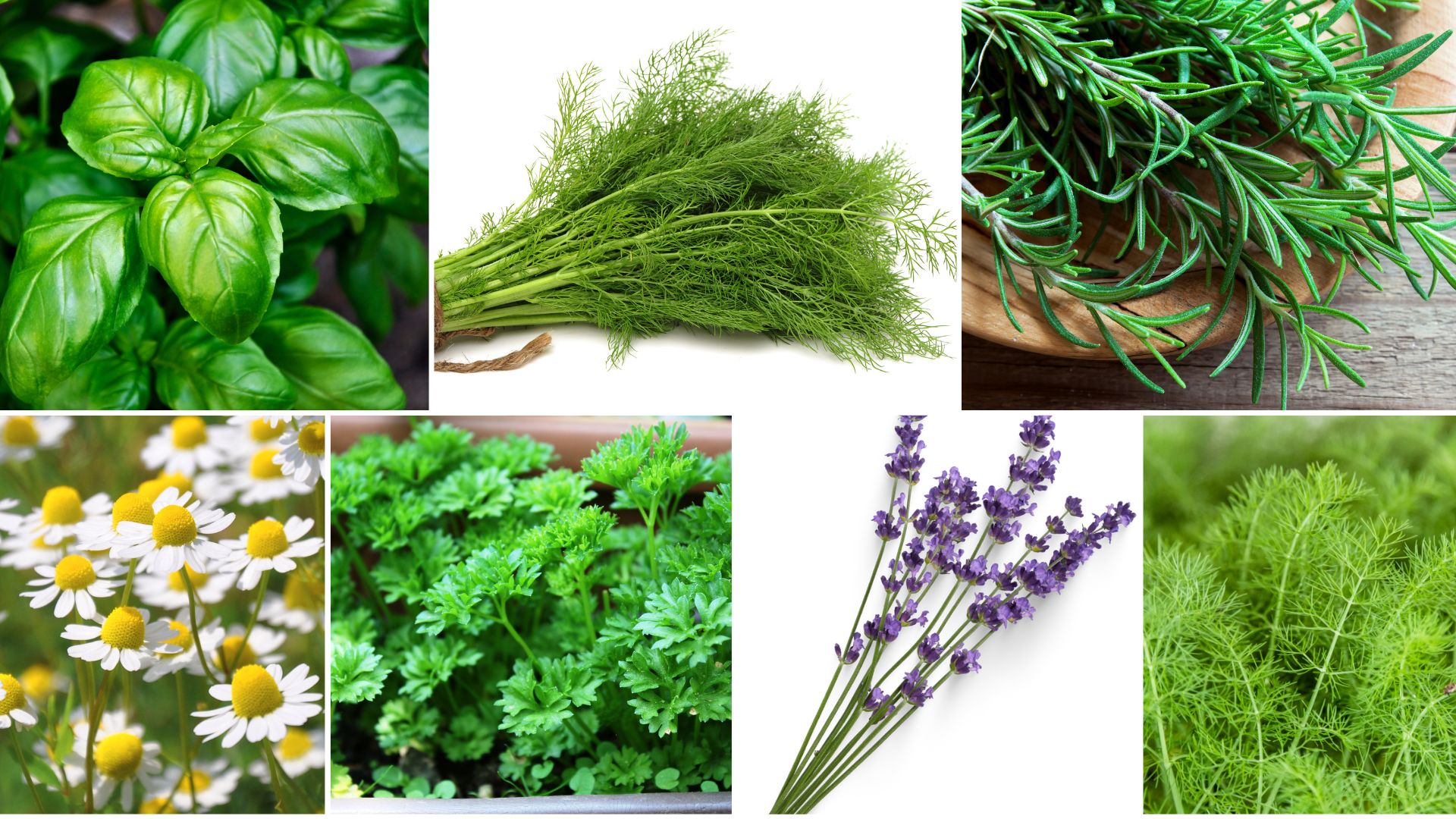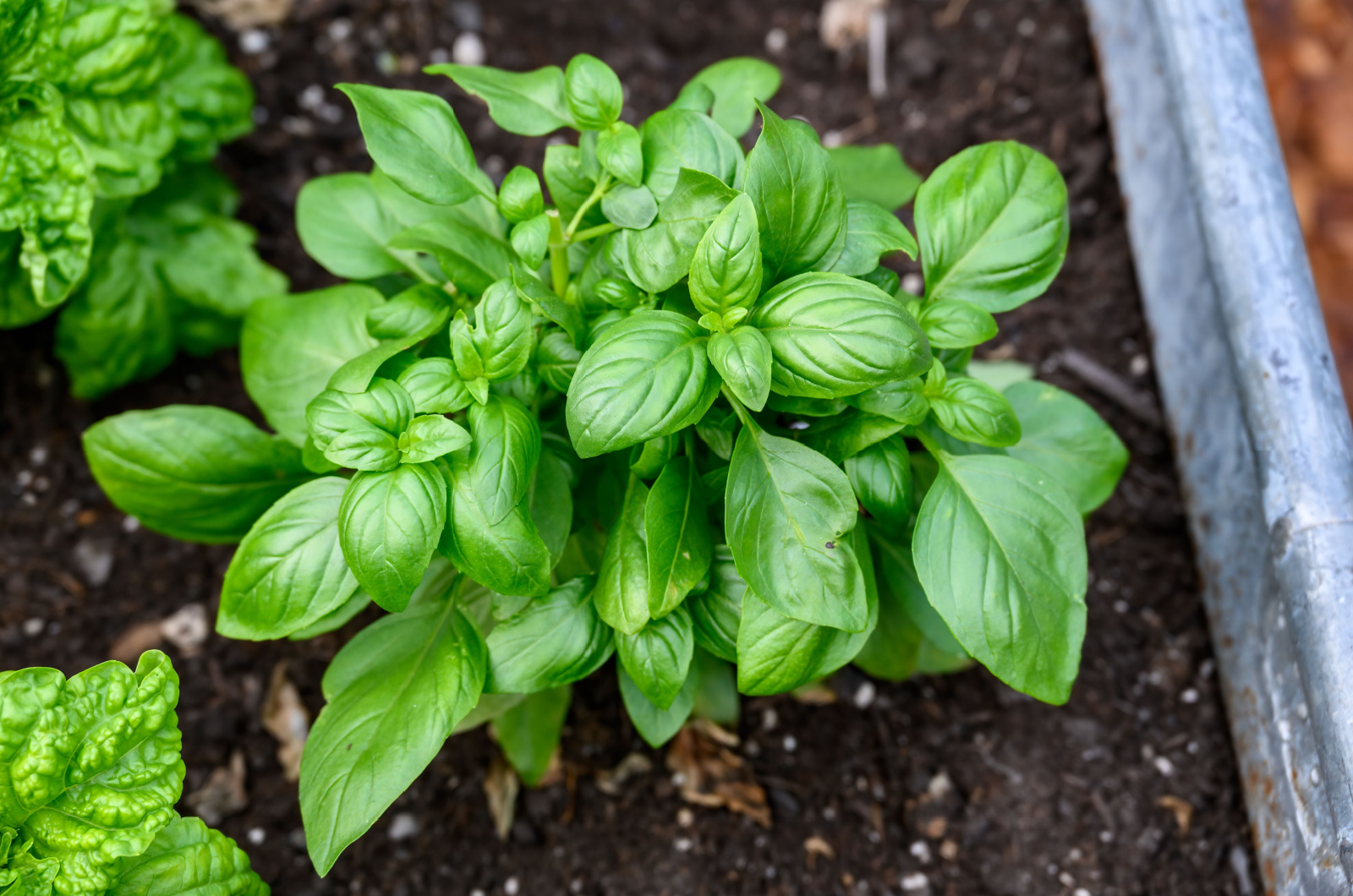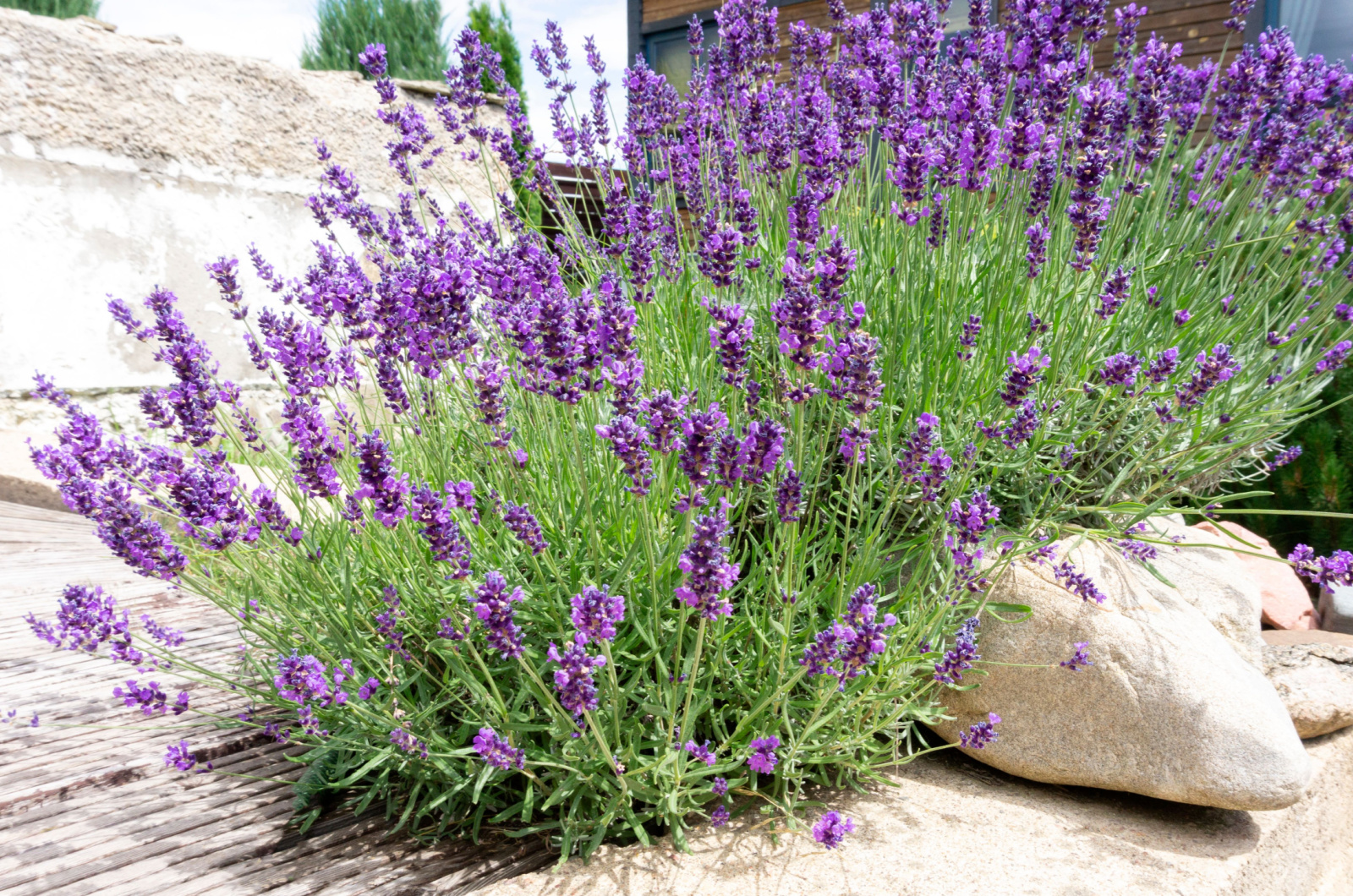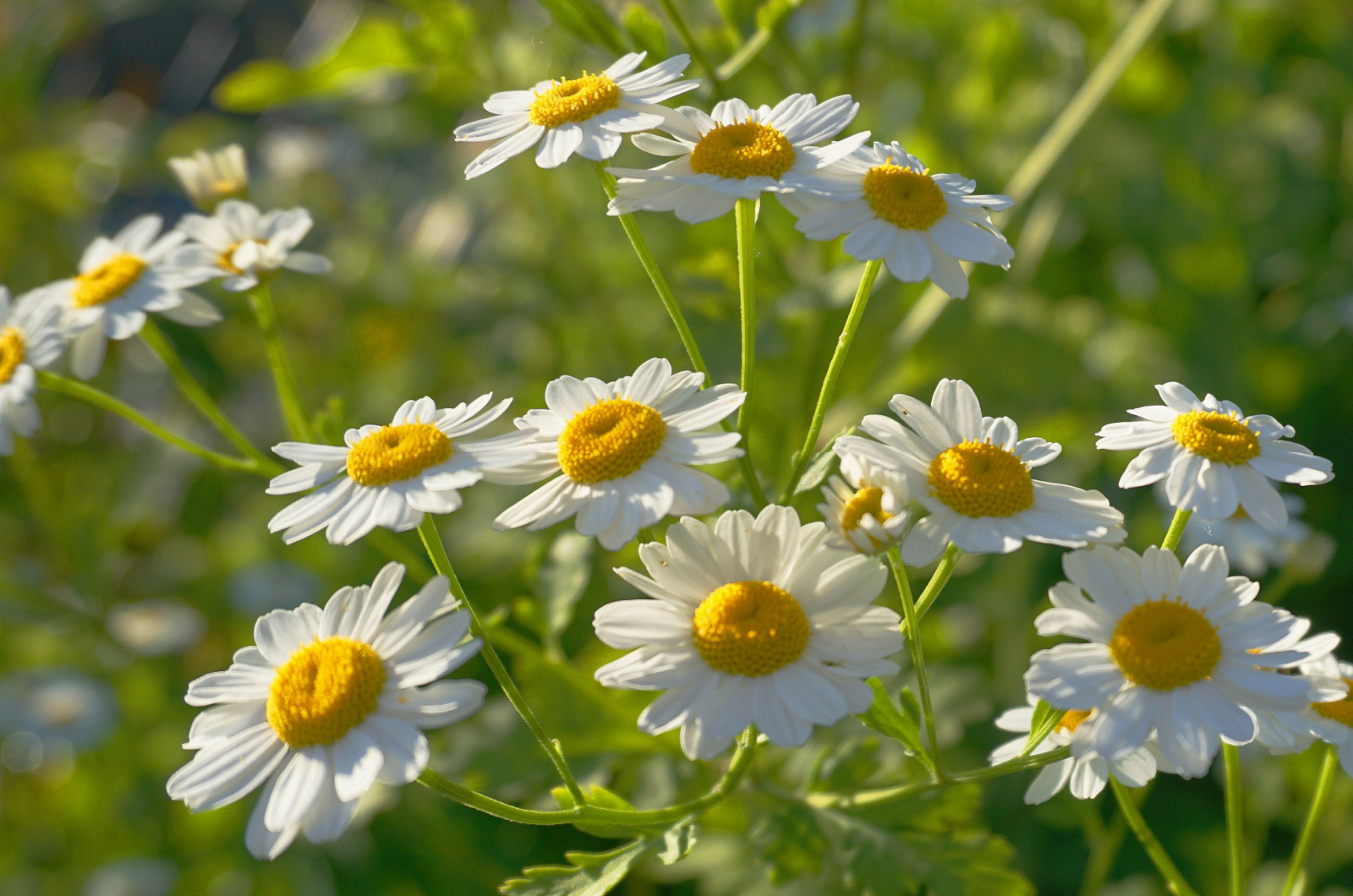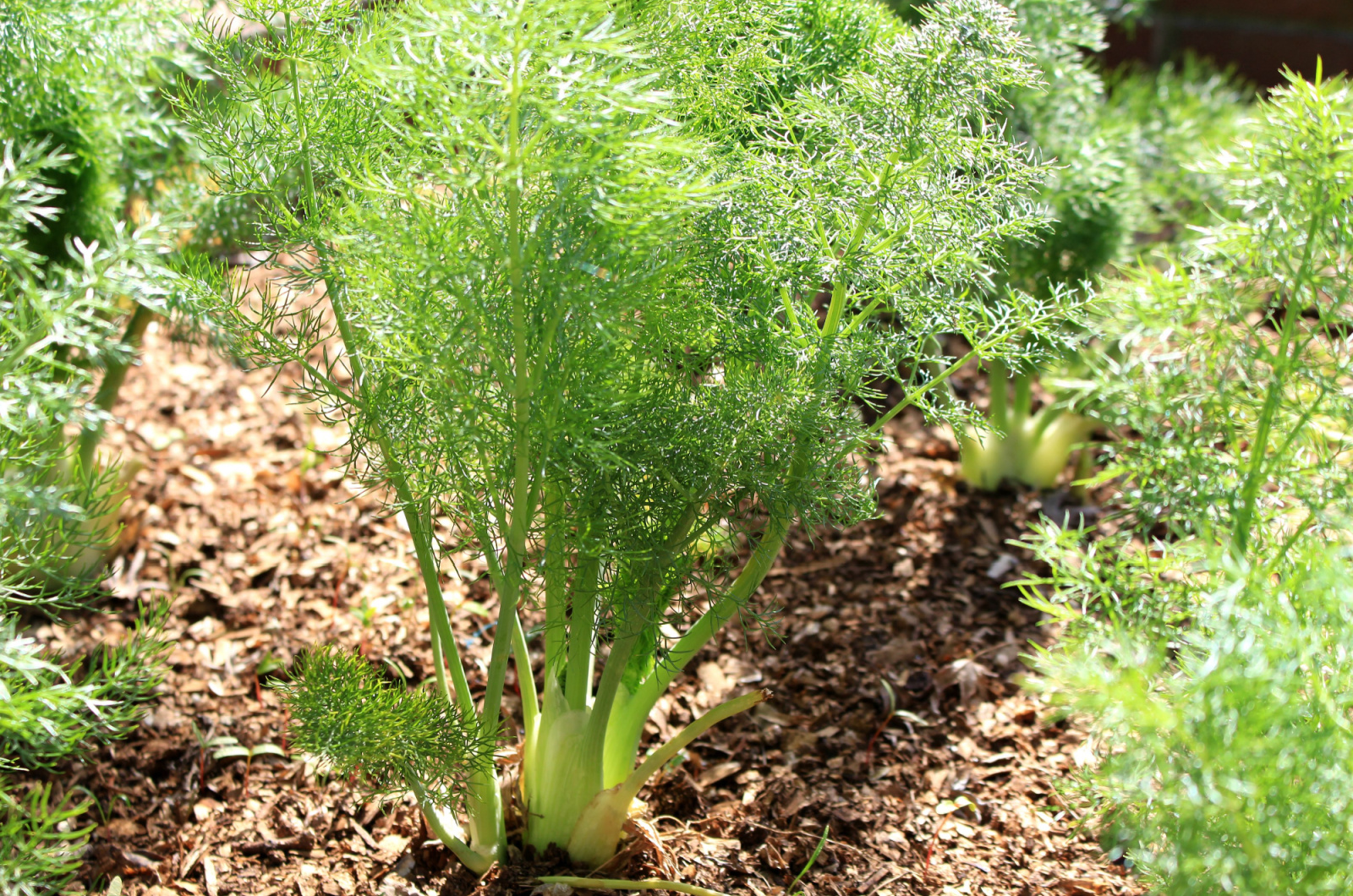If only all gardening enthusiasts had large outdoor spaces to fit all the plants they like! Unfortunately, growing plants indoors is the only option for many people. This also refers to herb cultivation.
While there are many herb species that can thrive inside our homes, there are some that aren’t big fans of such conditions. I’ll show you 8 herbs you should never grow indoors, especially if you’re a beginner.
Let’s get started!
1. Basil
I’m sure some of you are surprised to see basil on this list since many growers recommend this plant for indoor cultivation.
Where’s the problem then? Well, this plant prefers sunny and warm conditions and will only generate delicious leaves if you meet these requirements.
It would be perfect if temperatures in your home are around 80 degrees Fahrenheit year-round but I’m sure most of you keep it cooler.
That’s the first issue gardeners face if they grow this herb indoors, and it’s one of the main reasons they end up with wilting basil.
The second issue is creating a perfect watering schedule for your basil. Well, there aren’t any rules about when to water this herb; you shouldn’t let the soil become soggy or completely dry.
Since you’re the one that provides water for your indoor plants, not the rainfall, you must check soil moisture levels constantly.
But if you really, really want to add this plant to your indoor herb collection, here are some tips that can help you with it.
• Select the spot in your home where your basil can receive at least 6 hours of direct sunlight daily. If you don’t have such a location available, consider purchasing grow lights.
• Maintain the temperatures where you keep your basil between 70 and 80 degrees Fahrenheit.
• Make sure the soil is always moist but never allow the water to accumulate or you risk rotting.
• Inspect for pests regularly since they love basil as much as we do.
Bear in mind that indoor-grown basil won’t produce as many leaves as it would if you kept it outdoors.
2. Dill
Even though dill isn’t a commonly grown herb, in my humble opinion, it deserves a chance because of its amazing flavor. You should give it a chance if you have space outdoors.
And space is actually the answer to why you shouldn’t grow dill indoors. These plants can grow up to 5 feet tall, so your windowsill must be really big to fit a pot with mature dill.
I’m sure you’re wondering if you can control growth and keep the plant in a more compact shape. Technically, you can but you’ll need to prune and harvest often. If you have a lot of space and time, go for it, but think if it’s really worth it.
3. Lavender
So many people recommend growing lavender both indoors and outdoors, but you should know a few things if you decide to keep it inside.
First and foremost, these species are native to the Mediterranean so they’re accustomed to dry and warm conditions. So, if you have higher-than-average humidity or prefer cooler temperatures in your home, this herb may not be what you’re looking for.
These plants also require a lot of light; at least 6 hours of full sun daily. Additionally, it’s easy to overwater lavender because it prefers dry soil.
And even if you manage to ensure enough light and keep humidity low and temperatures high, the plant simply won’t reach its full potential and generate as many blossoms as it would if kept outdoors.
4. Rosemary
Often classified as one of the hardiest herbs out there, rosemary still isn’t the best choice for indoor cultivation. Yes, it is a resilient plant but this mainly refers to outdoor cultivation.
You’ll need to put a lot of effort to keep this fragrant and flavorful herb happy and healthy. Similarly to lavender, rosemary is native to dry and warm conditions and can’t survive without enough direct light.
Additionally, you need to pay close attention to the soil moisture content because waterlogging may have fatal consequences.
Pruning rosemary isn’t a hard task and beginners often don’t have trouble maintaining its compact shape. But these plants can reach 5 feet tall so you’ll need to trim constantly unless you have an enormous kitchen that can fit such a large pot.
The truth is that rosemary has many uses, and that’s the main reason why some growers take up the challenge and add it to an indoor garden. But if you have some space outdoors, maybe it would be better to keep it there.
5. Chamomile
The adorable blossoms and health benefits of chamomile (1) make this herb one of the top choices of many growers. However, those who want to grow it indoors should think twice.
Chamomile is frequently used as a walkable ground cover plant because it has a spreading growth habit. This is actually one of the main reasons why you shouldn’t grow it indoors. It simply won’t fit into a small planter you can keep on your windowsill.
Another problem is that this herb requires a lot of light to generate blossoms so you need to find a spot that fits a large pot and receives direct sunlight.
Well, the blossoms are the reason why growers decide on this herb and you can’t really do much if you get only a couple of them.
6. Parsley
I often refer to parsley as the king of versatility but I mainly think of its culinary uses. Adaptability to indoor conditions isn’t really one of the features of this herb.
I only recommend growing it indoors if you have a spot on the windowsill that faces south. Light creates the biggest issues when it comes to parsley. If you don’t provide it with enough full sun, its stems will become too long and the plant may topple over.
Additionally, it will become weak and generate fewer leaves that simply aren’t as flavorful as you expect them to be.
7. Fennel
If you’re a fan of strong flavors, fennel is the perfect herb for your outdoor garden. Growing fennel indoors isn’t recommended due to a couple of reasons.
The first one is the space because this herb can reach 6 feet tall and wide. If you have a large space indoors, you should consider another factor and that is light.
Similarly to other herb species on this list, fennel loves direct sunlight, and its soil must have excellent drainage. Lack of light leads to legginess and poor drainage leads to overwatering and rotting.
8. Cilantro
Not everyone likes the strong scent or taste of cilantro. If you’re among those who love it and are thinking of adding it to your garden, you should avoid doing it indoors.
These herbs develop long stems and become leggy if there isn’t enough light. But the appearance isn’t what should concern you. If you don’t provide it with direct light, you’ll get very few leaves and poor yield is the last thing you want.
From my experience, even the sunniest window or grow lights indoors can’t help cilantro to reach its full potential.
The Bottom Line
One thing is certain, you can add any of these herbs to your indoor garden if you want, but think well if it’s worth all the trouble.
I mean, there are so many herbs, such as mint or thyme, that perform very well indoors and will thrive if you meet their basic requirements. And I guess that’s exactly what every beginner gardener wants.
References
1. Srivastava, J. K., Shankar, E., & Gupta, S. (2010). Chamomile: A herbal medicine of the past with bright future. Molecular medicine reports

